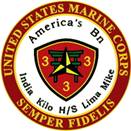

Vol 1
Isssue 19
09/01/10
2010 REUNION ISSUE
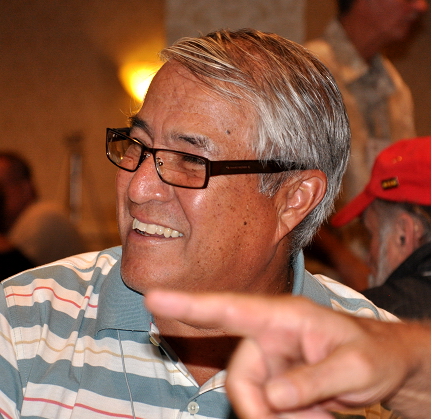
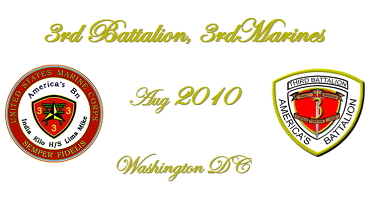
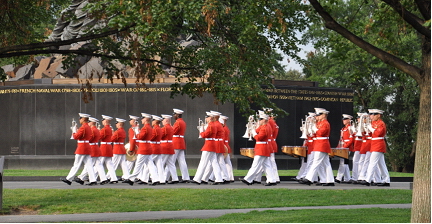
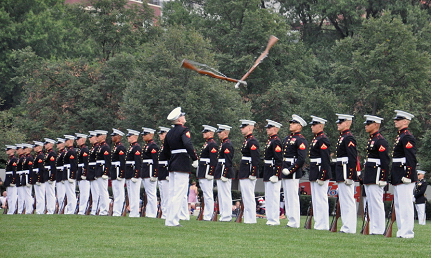
Tuesday evening was kicked off with by the trip to the Sunset Parade at the Marine Corps War Memorial.
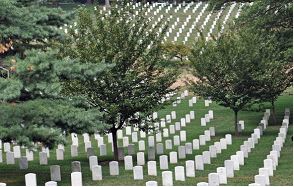
Wednesday morning offered a tour of Arlington National Cemetery
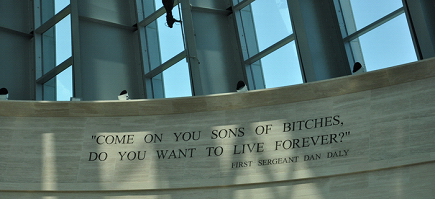
Thursday afternoon it was off to the Marine Corps Museum at Quantico.
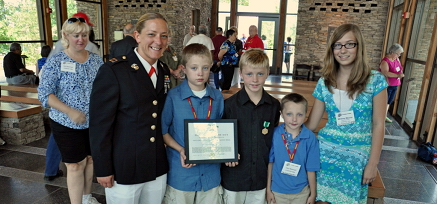
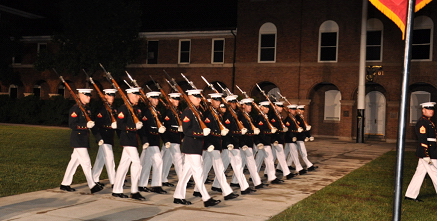
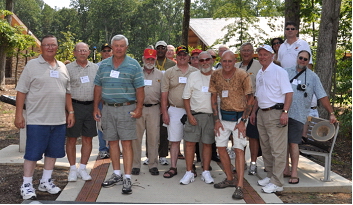

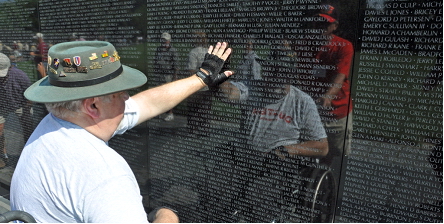
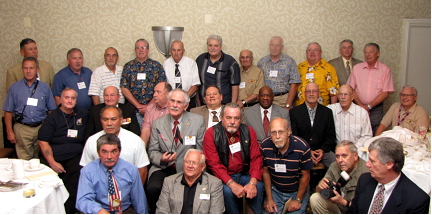
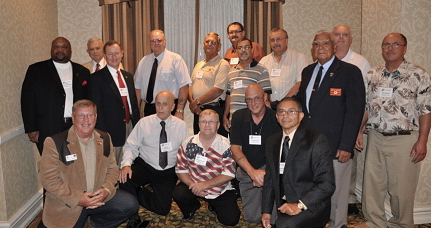
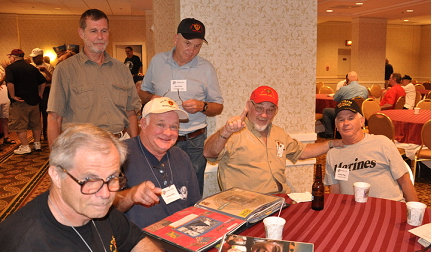
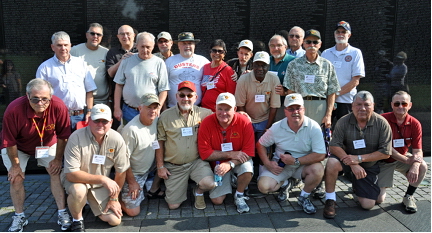
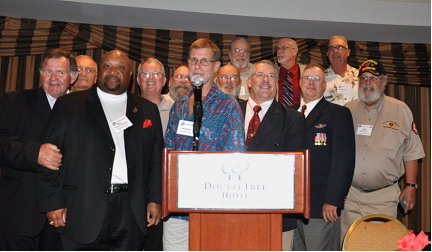

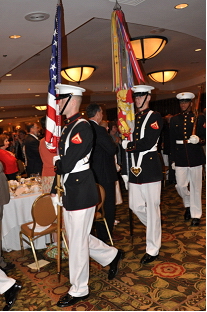
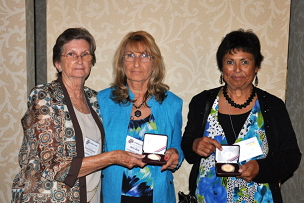
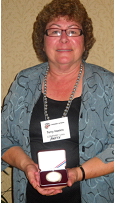
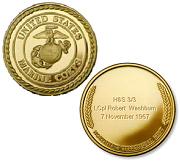

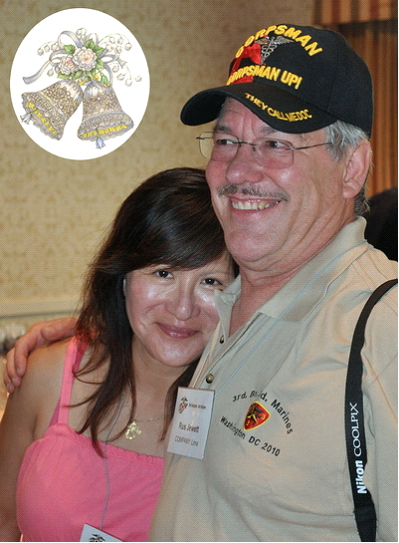
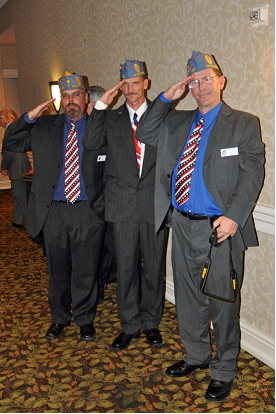


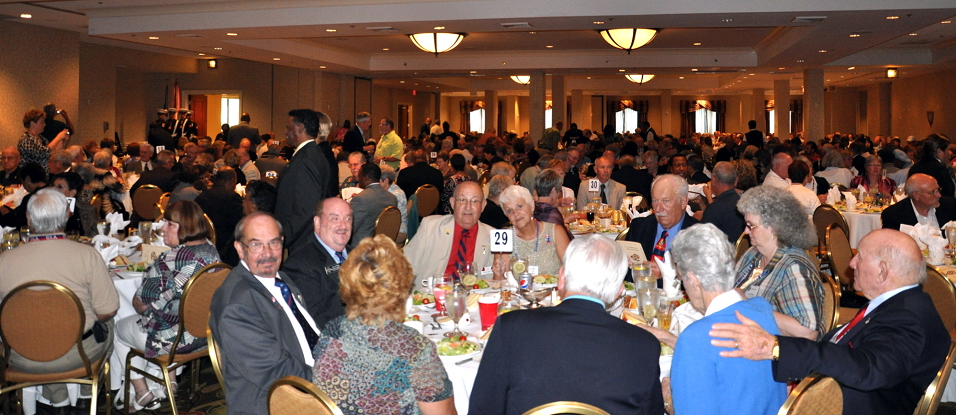
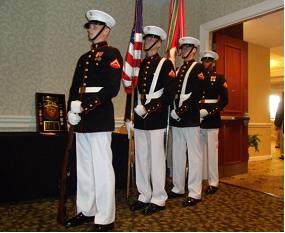
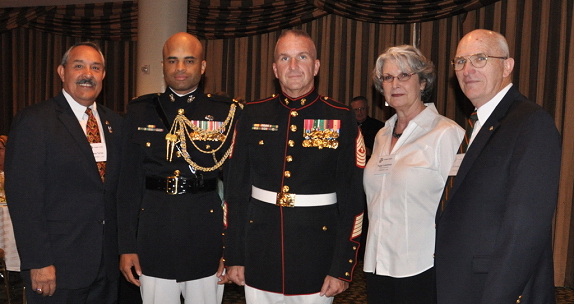

Jesse Torres
Maj
Quintin Jones
SgtMaj
Jim Lanham
Ed & Peggy
Lawrence
COLOR GUARD from
HQ Marine Corps
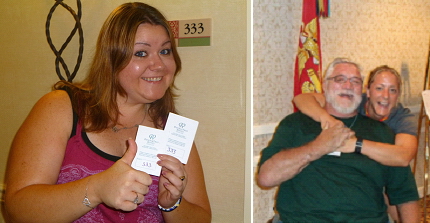

Leatherneck Magazine May 2000
A Memorial Day Tribute: Survivor's Guilt
By Charles E Lowrie
K/3/3 1966-67
"I knew the circumstances of the deaths of my comrades and wondered what their accomplishments might have been had they lived."
It was misting when I boarded the bus at the hotel. The 3d Battalion, 3d Marine Regiment of the Third Marine Division. Vietnam era was having its reunion in Washington, D.C., and we were enroute to the Vietnam Veterans Memorial.
All on board had been drinking the night before, and I'm sure some of the hangovers were Olympian. The alcohol had measurably enhanced our memories of courage and triumph. But now, as we rode to a rendezvous with our buddies whose lives had ended so many years ago in that abattoir north of Route 9 and south of the demilitarized zone in Vietnam, I listened to some veterans chatter incessantly, noticing that others sat quietly - staring. I recalled that they acted the same way years ago, in those minutes before moving out across the paddies toward the tree lines.
My thoughts-were both retrospective and introspective. I knew full well the circumstances of the deaths of my comrades and wondered again -- as I had for so many years -- what their accomplishments might have been had they lived. Most were volunteers. Some, to their own horror, had been drafted into the Corps. One of them once told me he was certain it was "the work of the devil." I smiled, remembering how my mother - to her dying day - referred to the "USMC" tattoo on my left arm as "the mark of Cain."
One of the draftees owned and operated a very successful insurance agency. Another was an architect. For the good of the Corps, they had been made machine-gunners. Yet, these Marines were no different from the leathernecks of yore. Their appreciation of their circumstances ran the gamut from, "I'm gonna do my time and get out;' to "Hell, this is the best I've ever had it." None of us suspected that Vietnam would be the watershed of our lives.
But now, here I was, about to face my past. I had been doing it for years with no closure. We finally arrived and dismounted the bus. We walked a short distance, and there it was.
I had seen "The Wall" on television and in photographs, but was in no way prepared for the sight of those massive black granite slabs. Fiftyeight thousand dead is but a statistic to some. As I neared the memorial, I began to make out the names etched into the stone. Then the number 58,000 took on new meaning. I knew the details of the design, but the fact that every stab was covered entirely with names stunned me.
A brief memorial service was held to collectively honor the battalion's killed in action, and then the colonel. a former commanding officer of 313, told us to move forward. He told us to go slowly and take our time as "we got a bunch of buddies down there."
During my 13 months in Vietnam. from May 1966 to June 1967, the battalion had suffered many casualties. I had racked my memory after I acquired a copy of "To Heal a Nation" by Jan C. Scruggs and Joel L. Swerdlow, and to my dismay I could recall only the names of approximately 25 of the dead. I knew there were more. Most of those I couldn't remember were new guys.
At last I stood on the walk in front of the memorial, deciding where to begin, I looked up at The Wall. The rain coursed down the polished black granite, and the rivulets were legion as the water filled the names.
I stood there for a moment, my emotions still in check. Then an elderly lady in a wheelchair said, "It looks like The Wall is crying back at us." That did it. A salvo of tears burst from me and everyone nearby.
When I recovered, I went to the directory and looked up the names of those who came home wrapped in ponchos. That done, I began trooping the line. The names are arranged in order of death.
I found the first one. IIe was a tall, clean-cut Nordic type, killed three days after we arrived in Vietnam. A bullet from a machine gun struck him in the head, killing him instantly.
Then I found the corporal who had stormed the enemy bunkers on Mutter Ridge, 11 Nov. 1966, destroying one before they got him. He was posthumously awarded the Navy Cross. That was our introduction to Operation Prairie I.
The rifleman who was directly behind me when we assaulted the enemy mortar emplacement was next. It happened on 27 Dec. 1966, when the entire day had been just another walk in the sun. He was a feather merchant, and I remembered helping him up the ravines earlier that day, as his gear weighed heavily on him. He had received word the day before that his wife had given birth to twin girls. He was able to talk some until his shrapnel-- riddled lungs filled with blood and slowly, quietly drowned him.
I stopped and wondered whatever happened to the daughters who never knew him.
The next two names were side by side on the granite. They had died instantly from head and chest wounds incurred in an ambush in March 1967 during an operation north of Route 9. I had served as their section leader at Camp Pendleton, Calif I had injured my ankle during night maneuvers and had been taken to sick bay for treatment. When I returned to the barracks, they were waiting for me. Both had gone to the mess hall and bribed a cook to fix some take-out chow for me, as they knew I hadn't eaten.
I saw the name of a Marine from Fort Worth, Texas. He was a good man with a great sense of humor who always pulled his load. Shrapnel from a 27 mm cannon round pierced his larynx, and he suffocated. After the battle, I had to go to Dong Ha and identify his body. The quick grin was gone from his face. I also identified the body of another Marine, dismembered by the same shrapnel. His nickname was Reb, and he and the Texan died a long way from home in March 1967.
I looked farther down the tablet and saw the three mortarmen. One was from Oklahoma, a Choctaw Indian with an engaging grin. Another was from Missouri and could do the best imitation of a coonhound on a fresh trail I ever heard. They died together when counter-mortar fire struck their position. Their squad leader, blinded and legless, died of his wounds a few days later after the killing had ceased on that never-ending day in March during Operation Prairie II.
I moved on to section 18-E and stood there a long time. The insurance agent and the architect were there. A few days before his death, the insurance agent spoke to me fondly of his family and of his plans for the future. Company K had stormed Hill 861 on 25 April 1967 at the beginning of the hill fights; he and the architect were manning their machine gun when a round from an AK-47 assault rifle killed him. The architect moved him off the gun and resumed firing. The North Vietnamese killed the architect with a hand grenade.
The platoon corpsman ran to them and was shot through his shoulder. He feigned death, and the enemy shot him again in the hip. When he didn't flinch, they resumed looting the bodies of the insurance man and architect. When darkness fell, the corpsman crawled back down the hill to our lines. He gave himself morphine and resumed attending to the wounded. His wounds were tended, and he was placed in an old bomb crater with the other wounded. The next morning, the first mortar round fired by the North Vietnamese fell into the crater and killed him and others.
He was one of my best buddies. A ridge runner from Tennessee, he had a saying for every occasion. He was clumsy, but a hacker. We pulled many liberties together and endured hardships by laughing at each other's misfortunes.
We rode out two typhoons together. The first was on the old troop transport ship USS Henrico (APA-45). As the waves pounded the old ship and it wallowed in the troughs, he and the architect had serenaded us with popular songs of the times. I can see and hear them now as if it were yesterday.
We rode the second typhoon out in a two-man tent pitched on a mountainside in Okinawa. The battalion was attending the Jungle Warfare school in the rugged Northern Training Area. When advised of the approaching typhoon, the helicopter-rich U.S. Army ferried its troops out expeditiously. The Marine Corps, as always ill-equipped, apparently could not obtain sufficient trucks, much less helicopters. So we were ordered to move to the lee side of the mountain, pitch tents, batten down the hatches and man the bilge pumps. My buddy and I passed the night safely, smoking Marlboros and talking about what we would do once we were wealthy. It was most gratifying to all that the tent sheltering the company officers collapsed during the night.
On the next line of The Wall were three names from the 1 st Squad of the 1 st Platoon. They also died on 25 April 1967. It happened in the opening moments of a battle to help 1 st Bn, 9th Marines when the North Vietnamese shot them to rags from hidden and fortified bunkers on Hill 861.
My eyes scanned The Wall, and three lines down was the young Marine who showed me a quick way to unload concertina wire from a six-by truck. It was quick all right. He rapidly backed up the truck and slammed on the brakes. The barbed wire rolled into the company commander's tent. The only reason we were not drawn and quartered was because the captain was at the battalion command post.
The Marine told me that day that he had decided to embrace Catholicism, and his great fear was that he might get killed before he accomplished the task. He was small in stature, but had eyes that could talk. His fire-team leader had been giving him instructions in the Catholic faith and was at his side when he took the bullet in his head on Hill 861. As he fell, he screamed, "Frank! Frank, baptize me!" Frank baptized him with halazone-laced water from his canteen as the young Marine's eyes rolled backward and he gave up the ghost.
I moved back and leaned against the rail that runs along The Wall's walk to regroup. The rain was coming down a little harder as I saw another name. He was quite the family man-a career Marine with a great sense of humor. He had been wounded during his first tour. He recovered nicely, in time to join "Kilo" Co's assault on Hill 861 and die a slow, painful death from mortar shrapnel. There was no morphine to be had as most of the corpsmen were dead or wounded. Both sides could hear him begging the man lying next to him to kill him. He finally died in the early hours of 26 April.
I stepped back then and looked at my reunion comrades. Some were standing there quietly and staring at The Wall, their faces awash in tears. Some were openly sobbing, with others comforting them. One walked to me, pointed to a name and explained to me in a hoarse, choking voice how much that Marine meant to him and how he had died. I listened quietly until he was through and then hugged him. After a while, he walked away and I moved back to The Wall.
I squatted down, and the next line contained the names of four members of the 2d Plt killed by sniper, machine-gun and mortar fire on Hill 861. One of them was a cocky Marine from up north somewhere. I had an idea others thought so too, as he was constantly on working parties. He jacked his jaws and maybe every other lick he hit was a hard one. He never busted his hump. He asked me to give him an extra soft drink one day. I told him he didn't rate it. I have regretted that for 33 years.
Another of that group was a well-read Marine who tried valiantly to convert me to be a disciple of J. R. R. Tolkien. He was a tall, bespectacled Montanan, who had plans of becoming a doctor. He was returning fire in the prone when mortar shrapnel entered the back of his head just below the edge of his helmet.
The last line displayed the names of three Navy corpsmen killed in a rocket attack at Dong Ha in May 1967. All were short-timers and well-liked. One had sewn my lacerated hand back together by flare light. He was extremely efficient and planned a career in the Navy. The other had healed my feet when I was suffering from immersion foot. He could hardly wait to get home to his wife. The third corpsman was immensely popular and later had an aid station dedicated to him at Ca Lu.
I couldn't remember the names of the two Marines who had premonitions of their deaths. The first went to his squad leader as they were preparing to leave the battalion perimeter to set up a night ambush during Prairie I.
He told the corporal he had a bad feeling about going out there. When asked to explain himself, he said, "I can't. It just don't feel right." But he went anyway and was killed shortly after leaving the perimeter. He tripped a booby trap, and grenade shrapnel killed him. I remember so well watching his buddies carry his body through the wire and back into our perimeter on old Payable Hill on that misty night in December 1966.
The second Marine was sitting by me as we waited for the trucks to arrive and take us to the line of departure. It was March 1967, and he was a short-timer. He was a quiet, black Marine and softspoken. I told him, "It looks like you'll be leaving pretty quick after we get back from this operation." He turned his head and looked at me and then straight ahead and said, "I ain't coming back from this one, Sarge." I shushed him and tried to pass it off. We crossed the line of departure and soon began taking small-arms fire from a tree line. We got on line and assaulted it, and the enemy departed. We counted heads, and one man was missing. We found him lying behind a paddy dike. A bullet had struck him over his right eye. He was right. He didn't come back from the operation. We wrapped him in a poncho and placed him on a helicopter for the long journey home to his loved ones-the long ride home from Leatherneck Square.
My rounds at The Wall were over. I looked up the hill, and another group of veterans was coming down to relieve me from my watch. I made my way up to the bus and passed Frederick Hart's sculpture of three American soldiers in Vietnam. It had been 28 years since I left Vietnam, but I noticed the machine-gunner is carrying his ammo improperly and none of the three are wearing helmets. But, what the hell, they looked like dog faces, not Marines.
I boarded the bus in my sodden clothing and sat thinking about how it started raining on New Year's Day 1967 and continued until Feb. 26. I remember the bone-wrenching fatigue as we desperately coped with nature and the North Vietnamese. To this day it is an amazement to me that we could put men in space, but couldn't get A-rations to South Vietnam's I Corps.
All of the troops on watch in the darkest hours struggled to stay awake. Some straightened safety pins and taped them to the muzzles of their rifles. They placed the muzzle under their chin, and when they nodded, the pin pricking their chin woke them. Others slapped their own faces viciously to keep themselves alert. Still others extended their arms skyward and left them there until the blood drained. When they lowered their arms, the pain from the recirculating blood entering their arms successfully drove off sleep. I chewed tobacco while on watch so the heartburn would keep me awake.
We all feared death, but to be dead and missing or, worse yet, to be maimed for life and nonfunctional were the great horrors.
I wish all the armchair generals who have never heard a shot fired in anger could have seen the new guy who struggled for life and identity. The fight was over, and we were evacuating casualties. A Marine had suffered a head wound that had robbed him of the ability to speak. He didn't have his dog tags. The corpsman had put an evac tag on him and expressed concern because he didn't know the Marine's name. The wounded man rolled onto his side and wrote his name in the dirt with his finger, as we watched in stunned silence.
In 1965 the Marines, as always, came to fight. My tour in Vietnam was near the beginning of America's involvement in the war. When I joined the battalion in 1966, I saw no drug problems, no racial strife and no support for the "hippie dope fiend, communist perverts" protesting at home.
The Marines I served with ate and drank together, chased women together, and fought and died together. The greatest feat of accomplishment in battle is to make fear work for you and not against you. Fear that overwhelms you might cause you to let your buddies down. You had to be confident that when the carnage began, your buddy was standing tall with you. And when it ended he would still be there.
We lived, fought and died by a code that to my perceptions is seldom embraced in civilian climes. It is a given that the bonds forged in the crucible of combat are enduring and impervious to the erosion of time. Some say the reunions of veterans are nothing more than attempts to regain their youth. I think all of us who served in 3d Bn know we left our youth in Quang Tri Province, as did our fathers on the shores of Iwo Jima. I'll never regain my youth, but I can enjoy the ties that bind our hearts together by meeting, reminiscing and kindling anew the fond memories of our buddies who have crossed the river. We still listen with great respect to our colonels and stand in awe of our sergeants major.
Finally, the bus was full. On the way back, we again shared our memories of who died where and how. As we reminisced, I recalled with great feeling the memorial service we had following our reunion in Florida.
The colonel stood at the podium after the prayers and began to speak as the last strains of "Amazing Grace" faded from the bagpipes. His back was to the Atlantic Ocean as he spoke of our dead.
He said, "They're behind me now, standing in three ranks at attention."
I saw them, still wearing the rags they'd died in. Their helmets were on and the chinstraps fastened. The rifle belts and suspender straps looked just right, and the rifles were at sling arms.
I looked closer and saw the platoon corpsman beckon to me. He said, "Come on, Jarhead. Liberty goes most ricky-tick." The architect was standing by him and gave me a thumbs-up. The insurance agent called to me, "Yeah, come on, Sarge, no room for stragglers in the Corps."
And I thought, "Hold what you got. Gimme some slack. I love ya'll. I'm coming."
Final Muster 2009-2010
H & S
GARTH M. GARCEAU  05/13/10
05/13/10
MICHAEL McMILLAN 12/24/09
12/24/09
GROVER E. LEWIS 12/17/09
12/17/09
LYNN R. LEWIS
 11/21/09
11/21/09
PHILIP W. DEZAN 10/31/09
10/31/09
BRYANT R. NOBLES Jr. 10/28/09
MANUEL C. FARINA 08/09/09
08/09/09
GREGORY L. MATTON 06/15/09
06/15/09
HERMAN L. TATE 06/14/09
06/14/09
ROGER W DAY
 05/24/09
05/24/09
HERIBERTO GONZALEZ 03/14/09
LANCE S. DUBE
 03/01/09
03/01/09
WILLIAM D. HALL 02/19/09
DANIEL E. HENDERSON 02/16/09
India
ROBERT D. FALLO 08/10/10
08/10/10
RAYMOND BOROWSKI 06/16/10
06/16/10
JAMES A. SIMMONS 03/29/10
03/29/10
CLIFFORD L. McCANTS 12/19/09
12/19/09
MATTHEW G. ROGERS 09/23/09
09/23/09
MICHAEL L. KRAUSE 09/04/09
09/04/09
MAURICE CUNNINGHAM 08/29/09
JOE D. TURNER
 06/06/09
06/06/09
ALBERT L. PAULSON 02/08/09
02/08/09
Kilo
CLAUDE C. SHAW 07/15/10
07/15/10
DALE E. ALBRIGHT 04/20/09
04/20/09
WILLIAM R. KRUEGER 04/19/09
JAMES E. GROGAN 01/29/09
01/29/09
Lima
RICHARD G. KIDWELL 06/17/10
06/17/10
JOHN P. KIRCHNER 11/05/09
11/05/09
EDWARD T. SWAIN 10/29/09
10/29/09
DONALD E. HAWLEY 10/20/09
10/20/09
JOSEPH CUNNINGHAM 08/29/09
RANDALL W. WEBB 08/24/09
08/24/09
FRANKLIN FLANARY 05/04/09
05/04/09
GEORGE P. PETRI 04/17/09
04/17/09
ROGER F. MILHOMME 03/29/09
03/29/09
CHARLES E. JORDAN 01/25/09
01/25/09
JOHNNY M. MEDDERS 01/01/09
01/01/09
Mike
JOHN W. DAVIS
 08/14/10
08/14/10
ROBERT REITTER 07/23/10
07/23/10
LAWRENCE S. WILSON 06/16/10
06/16/10
MICHAEL B. RILEY 04/07/10
04/07/10
Doc TERRY E. GEE 03/01/10
03/01/10
DWIGHT L. GRIFFIN 01/14/10
01/14/10
MICHAEL A. GODSEY 11/08/09
11/08/09
Doc BARRY CRAVEN 10/25/09
10/25/09
RICHARD GORBARCZYK 10/23/09
JIMMY L. WOODS 10/13/09
10/13/09
THOMAS T. LIDSTER 10/03/09
10/03/09
MAC A. PERRY
 09/20/09
09/20/09
DONALD B. DAVIS 08/01/09
08/01/09
MICHAEL J. SYLVIA 06/09/09
06/09/09
GASTON L. WALKER 06/06/09
06/06/09
JOHN W. COLEMAN 05/04/09
05/04/09
DAVID L. BARROS 04/06/09
04/06/09
ARRIE LEE HARRIS 01/31/09
01/31/09
ALFRED W. BOATRIGHT 01/26/09

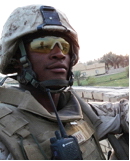
On July 18, 2010 Cpl Joe L. Wrightsman was part of a K/3/3 patrol crossing the Helmand river when an ANP (Afghan National Police) was swept away in the river behind him. Without hesitation, Cpl Wrightsman, in full personal protective gear, dove into the water in an effort to rescue the ANP, but disappeared in the river. His body was recovered down stream.

3/3 Reunion Memories Book
36 pages full color (8 1/2 x 11)
Includes 3/3 History and 3/3 Memorial Wall
$10/book mailing costs included
(actual costs ... no profit)
Order to:
Doc Hoppy
PO Box 33
Gentry AR 72734-0033
Captain Kim Smith, granddaughter of Doc Craven, joined with other family members for a presentation of Doc Craven’s Navy & Marine Corps Commendation Medal in a special ceremony at the Chapel.
Ripley’s Raiders gather at the site where the Ripley Memorial will be placed in the Memorial Garden near the Museum
Thursday night 8th & I held a special parade for 3/3, and pulled out all the stops
Col Montanus, CO of Marine Barracks, is a former 3/3 Alumnus of Desert Storm. Col Mike Harrington represented 3/3 at the ceremonies.
Friday saw us gathering at “the Wall”. An emotional, but healing experience.
There are 654 names of 3/3 alumni on the Wall; including those KIA in subsequent units.
Additionally, we have lost 20 during Afghanistan and Iraq.
H & S group
India group
Box 'n crew
Mike group
Corpsmen group
Banquet ... 600 seated for dinner!
Color Guard from HQ Marine Corps
Families of Billy Henderson, Isidro Baca, Terry Heekin and Robert Washburn attended the reunion.
Each family was presented with a Memorial Medallion from the Bn.
Tereza and Doc Russ Jewett tied the knot at the reunion.
Best wishes to the happy couple!
These 3 young men from a SC Sons of the American Legion jumped in and manned our Hospitality Suite “beverage station”.
They donated the tip buckets to the 3/3 Memorial Fund and the Ripley Memorial fund … roughly $3,000 was raised through their efforts.
I expect to see them at Branson in 2012 and Charleston SC in 2014.
Our deepest gratitude for their service to our crew!
L-R:
Bryan Glynn,
Kenny LaPlank,,
Fred Kiley
Candy Slaughter (left) helping out with the goodies that Doc Hardin donated for attendees.
3/3 Coffee mugs, decals, coasters, mouse pads, patches, etc.
They were a huge hit!
Youngest Marine at the reunion …
Bailey Slaughter
Krista Beicht draws lucky room 333 “Waltah Clawk” & Capt Smith
One of the sketches of the 3/.3 Memorial options 4’x4’x8’ All eras of 3/3 Marines are represented: WWII / Korean era, Vietnam, and D/S-OEF-OIF.
Cost estimates are approx $235,000. It will be a huge effort by all 3/3’ers to complete this project. 10% of the funds have been raised already. Please give as generously as possible. For info, contact Doc Hoppy

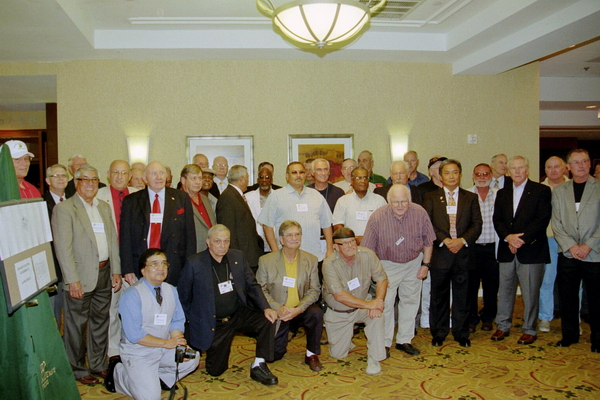
Kilo Co. group (post publication from Goza)